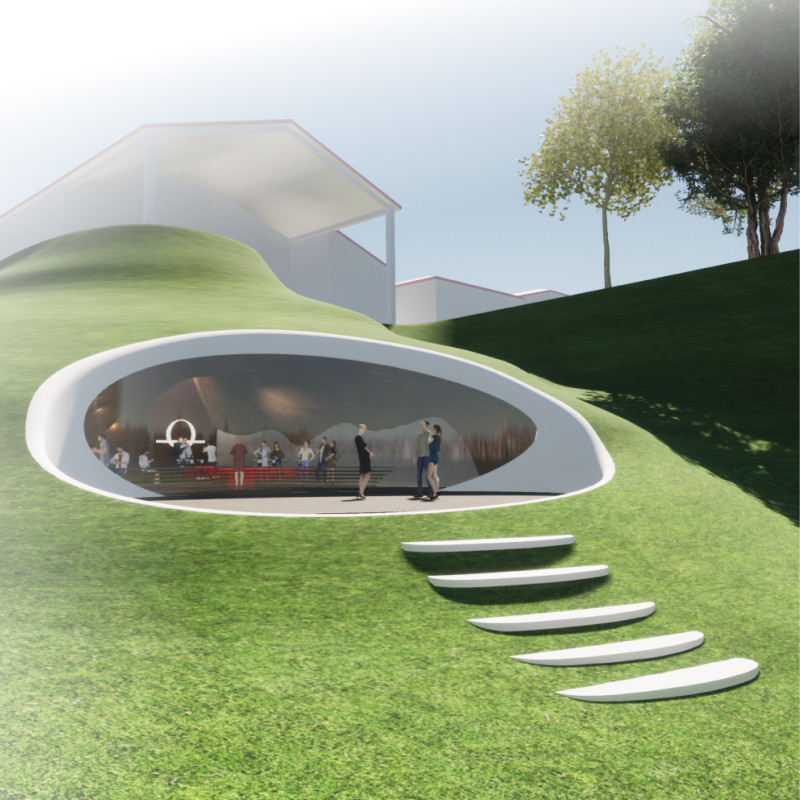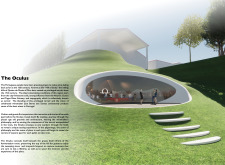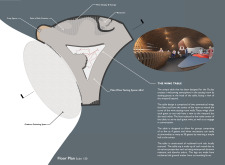5 key facts about this project
The Oculus is an architectural design located in the Quinto do Monte d'Oiro region of Portugal, known for its long history with winemaking that dates back to the 16th century. The project aims to blend structure and landscape, creating a design that invites visitors to engage with the story of wine production. The building is positioned beneath a grassy hill, allowing for views of the vineyards while maintaining the area’s natural atmosphere.
Spatial Experience
The layout of the Oculus is designed to provide a journey for visitors. As they enter, guests walk through a plaza filled with history, preparing them for what lies ahead. This initial experience sets the stage for a unique interaction with the vineyard, leading to a tasting room that serves as the central space of the building.
Tasting Room Design
The tasting room features a communal table with two wings extending from its center. This setup encourages guests to connect with one another while enjoying their surroundings. These wings provide an open view of the vineyards, emphasizing the importance of the location in the overall experience.
Materiality
In support of a sustainable approach, the Oculus uses reclaimed cork oak for the communal table along with reclaimed old-growth timber for its legs. These choices highlight the local character of the project and strengthen the relationship between the architecture and the environment. By using materials sourced from the area, the design reflects the region's identity.
Transparency in Design
The Oculus acts as an educational space, allowing visitors to observe different stages of the winemaking process, from fermentation to aging in barrels. This openness invites a greater understanding of the craft involved in producing wine. The design thoughtfully frames each phase, guiding guests through the wine’s story and celebrating the skill behind its creation.
As guests engage with the experience, they are drawn to the details of the reclaimed materials, which resonate with the local surroundings. Each element contributes to a deeper connection to the heritage and landscape of the area, making the visit both informative and enriching.






















































